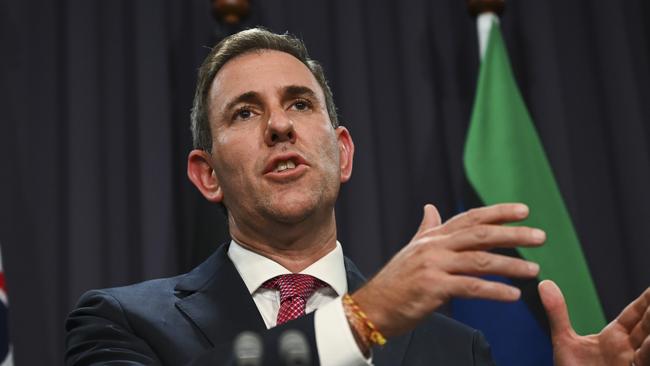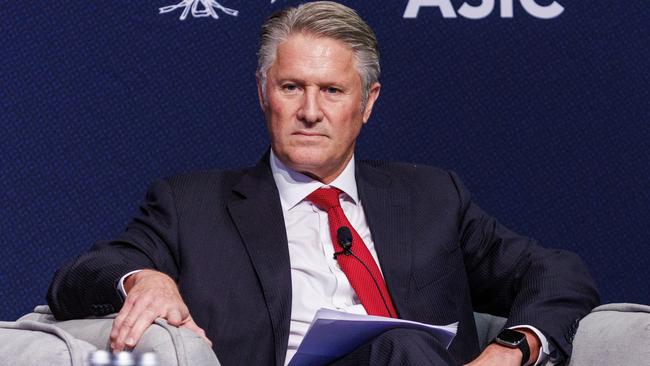Government unveils its planned mandatory climate disclosure regime for polluters
Australian companies could be given until 2030 to prove their climate disclosures in financial reports, under draft legislation put forward by the government.

Australian companies could be given until 2030 to prove their climate disclosures in financial reports, under draft legislation put forward by the government.
On Friday the Albanese government released its proposal to introduce a mandatory climate disclosure regime for large Australian companies under a staggered model set to kick in over three years.
Under the proposed scheme, large companies and asset managers will be required to reveal climate-related risks, risk-management strategies and emissions targets to investors.
The proposed reporting standards would require companies that met certain criteria to begin climate disclosures from mid-2024.
Companies with $500m in revenues would have to report climate matters to investors from July 1, 2024. Smaller companies with a turnover of $200m would start in 2026 and those with $50m in 2027.
Asset owners with more than $5bn under management will be required to begin reporting from July 1, 2026.
However, small and medium enterprises, registered charities or those with reporting exemptions from the corporate regulator will not be required to make climate-related disclosures.
Smaller entities required to begin reporting from 2027 will have to make climate-related disclosures “if they face material climate-related risks or opportunities for the financial reporting period”.

Treasurer Jim Chalmers said the proposed changes to reporting took a “balanced approach” and were an “an important step for improving transparency”.
Dr Chalmers said mandatory climate reporting offered investors and companies “the transparency, clarity and certainty they need to invest in new opportunities as part of the net zero transformation”.
Three models have been outlined by Treasury for the changes to reporting, with the department noting it supports a scheme which does not require mandatory assurance, or auditing, of statements until July 2030.
Treasury notes it expected this assurance approach to add $1 to $1.3m in transaction costs to almost 1800 captured entities, but costs would fall over time to as low as $500,000 to $700,000.
The industry has welcomed the proposed changes, with the Australian Institute of Company Directors noting the move to mandatory disclosures “represents the biggest change to corporate reporting in a generation”.

But the AICD said the mandatory reporting legislation had to be calibrated to avoid pursuing companies making disclosures “on a good faith, best endeavours basis”.
The AICD said it “strongly supports a climate disclosure framework that incentivises organisations to make high quality, comparable and useful climate disclosures”.
But the institute said the increase in disclosures “far in excess of current reporting practices … will mean extensive upskilling across boards, organisations and the economy as a whole”.
AICD managing director and chief executive Mark Rigotti said investors were seeking higher quality climate disclosures.
“To achieve this, the liability settings must be proportionate so that companies making disclosures on a good faith, best endeavours basis are not the subject of litigation,” he said.
“Ultimately this is what the Government’s legislation must be calibrated to achieve.”
The AICD also called on the Australian Securities and Investments Commission to “take strong action where it sees bad practices or attempts at greenwashing” in the wake of the introduction of the new standards.
ASIC in November said it would prioritise greenwashing, or companies making false climate-related claims, in the coming year.
The corporate regulator already has several greenwashing matters before the courts after taking aim at several asset managers last year. EY Oceania climate change partner Emma Herd said the proposed legislation was not surprising.

“Its pretty consistent on what the industry has been signalling they will do for a while now,” she said. “It’s pretty consistent with what we’re seeing in other jurisdictions.”
Ms Herd, who is co-lead of the EY Net Zero Centre, said the delays on assurance requirements under the proposed legislation showed the government “want the industry to learn by doing and don’t want the assurance requirements to act as a barrier”.
“But we fully expect that many organisations will continue to adopt a higher level of assurance over their disclosures because its consistent with what they’re already doing.”
In a recent note to investors ratings agency Moody’s said businesses and financial institutions would be forced to navigate an increasingly complex regulatory landscape in 2024, with mandatory climate disclosures set to land in several countries.
Moody’s warned that mandatory climate disclosures would “increasingly support the assessment and management of climate-related risks for businesses, asset owners, and asset managers”.
“However, implementation will create some complexity and compliance costs for reporting companies,” Moody’s analysts said. “In particular, accounting for emissions up and down the supply chain will remain difficult for many companies. Lack of standardisation across companies and jurisdictions may also limit the usefulness of disclosures in the near term.”
Moody’s said companies with high emissions profiles may face financial and reputational risks under a mandatory disclosures model.
The European Union has introduced a disclosure mechanism for companies operating within member states.








To join the conversation, please log in. Don't have an account? Register
Join the conversation, you are commenting as Logout